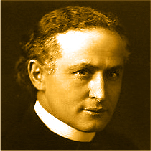
Houdini was born as Erik Weisz in Budapest, Austria-Hungary, on March 24th 1874. He was one of seven children, and when he was four years old the family moved to the United States. They first lived in Appleton, Wisconsin, where Weisz’s father served as the local Rabbi – and thereafter New York City. As a child, Ehrich Weiss (the family changed the spelling of their names on arriving in America) took several jobs, making his public début as a nine year-old trapeze artist, calling himself ‘Ehrich, the Prince of the Air!’ Weiss was also a champion cross country runner in his youth, demonstrating a high level of fitness which would stand him in good stead for later escapes. Several years subsequent, at the age of seventeen, Weiss became a professional magician and began calling himself ‘Harry Houdini’. At first though, Houdini had little success, playing in dime museums and sideshows, focusing initially on traditional card tricks, and even doubling as ‘The Wild Man’ at a circus.
Houdini’s big break came in 1899, when he met manager Martin Beck in rural Woodstock, Illinois. Beck was impressed by Houdini’s handcuffs performance, and advised him to concentrate on escape acts. Houdini was immediately booked for the Orpheum vaudeville circuit. Within months, he was performing at the top vaudeville houses in the country. In 1900, Beck arranged for Houdini to tour Europe, and this really was the start of his stardom. After some days of unsuccessful interviews in London, Houdini managed to interest Dundas Slater, then manager of the Alhambra Theatre. He gave a demonstration of escape from handcuffs at Scotland Yard, and succeeded in baffling the police so effectively that he was booked at the Alhambra for six months. From here on, Houdini’s success exponentially grew. In 1901, Houdini introduced his own original act, the Milk Can Escape. In this act, he was handcuffed and sealed inside an over-sized milk can filled with water, and made his escape behind a curtain. As part of the effect, Houdini invited members of the audience to hold their breath along with him while he was inside the can. This act was followed by many more, most notably the 1904 escape, where thousands watched as he tried to escape from special handcuffs commissioned by London's Daily Mirror, keeping viewers in suspense for an hour.
Another stunt saw Houdini buried alive and only just able to claw himself to the surface, emerging in a state of near-breakdown. Houdini performed at least three variations on this ‘Buried Alive’ stunt during his career. The first was near Santa Ana, California in 1915, and it almost cost Houdini his life. He was buried, without a casket, in a pit of earth six feet deep. He became exhausted and panicked while trying to dig his way to the surface and called for help; when his hand finally broke the surface, he fell unconscious and had to be pulled from the grave. While many suspected that these escapes were faked, Houdini presented himself as the scourge of fake magicians and spiritualists. After extensive research, reasonably early on in his career, Houdini published The Unmasking of Robert-Houdin (1908), in which he called his former idol Jean Eugène Robert-Houdin a liar and a fraud for having claimed the invention of automata and effects such as aerial suspension.
As President of the Society of American Magicians (from 1917 until his death in 1926), he was keen to uphold professional standards and expose fraudulent artists. Houdini was the Society’s only president to serve for more than one year – greatly growing the success of the organisation, which now embraces 6,000 members and 300 assemblies world-wide. In his lifetime, Houdini also made several movies, but quit acting when it failed to bring in money. He was also a keen aviator, and aimed to become the first man to fly a plane in Australia. In 1909, Houdini became fascinated with aviation and purchased a French Voisin biplane for $5000. After crashing once, he made his first successful flight on November 26 in Hamburg, Germany. The following year, Houdini toured Australia, bringing along his Voisin biplane. It is an area of great debate whether he was efficacious in his flight however. Fitting for a man with such a taste for the spectacle, even the circumstances of his death in 1926 were dramatic and mysterious.
In his final days, Houdini suffered from an acute fever and appendicitis, but refused advice to have immediate surgery, optimistically holding to a strong belief that he would recover. Houdini instead carried on with a show at the Garrick Theatre in Detroit, Michigan. Despite this optimism, his last words before dying were reportedly: ‘I'm tired of fighting.’ Eyewitnesses to an incident at Houdini's dressing room in the Princess Theatre in Montreal gave rise to speculation that Houdini's death was caused by a McGill University student, J. Gordon Whitehead, who delivered a surprise attack of multiple blows to Houdini's abdomen. One witness described Whitehead asking Houdini ‘whether it was true that punches in the stomach did not hurt him’, and then delivering ‘some very hammer-like blows below the belt.’ Harry Houdini died of peritonitis, secondary to a ruptured appendix at 1:26 p.m. on October 31, aged fifty-two.



